
Discovering Tiepolo’s ‘Bacchus and Ariadne’ Anew
Both Bacchus and Ariadne stand out among the chaos around them. Bacchus is leaping with a graceless elegance, his vibrant pink cloak stands out against the rich blue sky as it catches the sunlight. Despite him being a god, he only has one thing in mind: Ariadne. The circle of stars above her head is in reference to when Bacchus placed Ariadne's.

Bacchus and Ariadne by Francesco Maggiotto Bacchus and Ari… Flickr
Bacchus and Ariadne (1522-1523) is an oil painting by Titian.It is one of a cycle of paintings on mythological subjects produced for Alfonso I d'Este, Duke of Ferrara, for the Camerino d'Alabastro - a private room in his palazzo in Ferrara decorated with paintings based on classical texts. An advance payment was given to Raphael, who originally held the commission for the subject of a.

Painting, Bacchus, Hermitage museum
April 24, 2020. The National Gallery in London hosts one of Titian's greatest works. It is an oil painting "Bacchus and Ariadne" made around the year 1522 for Alfonso I d'Este, Duke of Ferrara. Most art historians would describe this theme as mythological. It depicts the moment when Bacchus finds Ariadne on the island of Naxos.
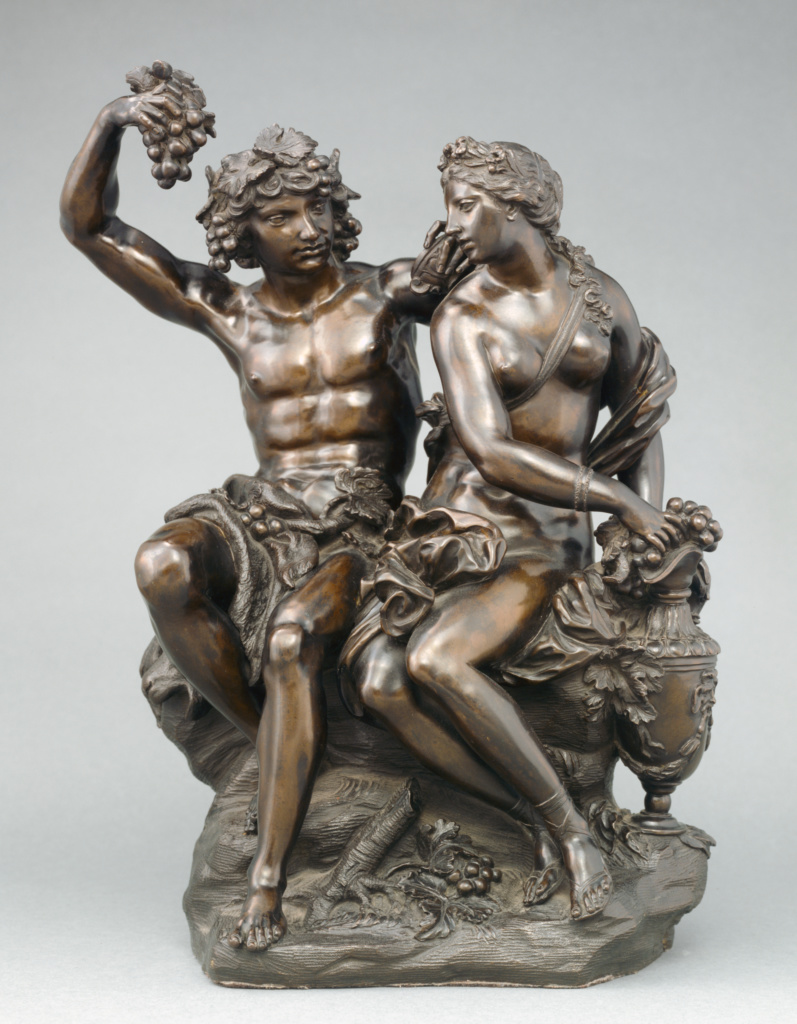
Bacchus and Ariadne (Getty Museum)
Bacchus and Ariadne captures the moment when Bacchus, the Roman god of fertility and wine, instantly falls in love with Ariadne, a mortal princess of Crete.Ariadne is the clothed female figure on the far left, and Bacchus is the nude male figure in the center. A crowd of Bacchus's followers dominates the right side of the painting.
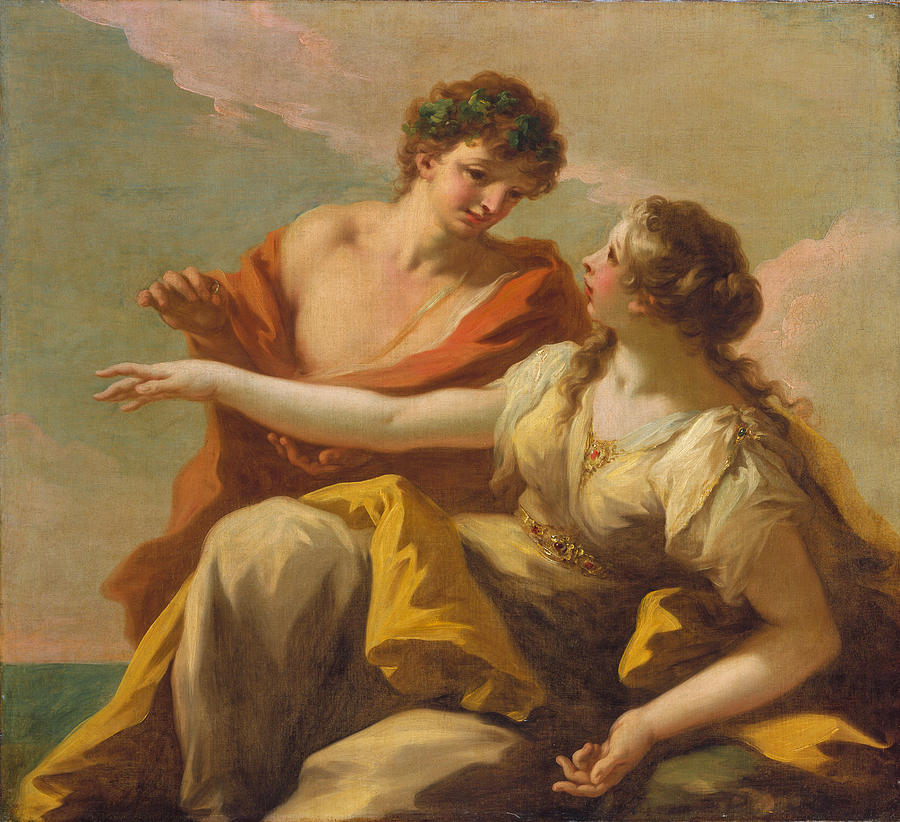
Bacchus and Ariadne Painting by Giovanni Antonio Pellegrini Fine Art America
Bacchus and Ariadne (c. 1523) is a painting by Titian derived from Ovid and Catullus, created on commission, and showing the moment when Ariadne, abandoned by her lover Theseus, is first sighted by Bacchus, who instantly falls in love with her. For an appreciation of this painting, two things must be possessed by the viewer:
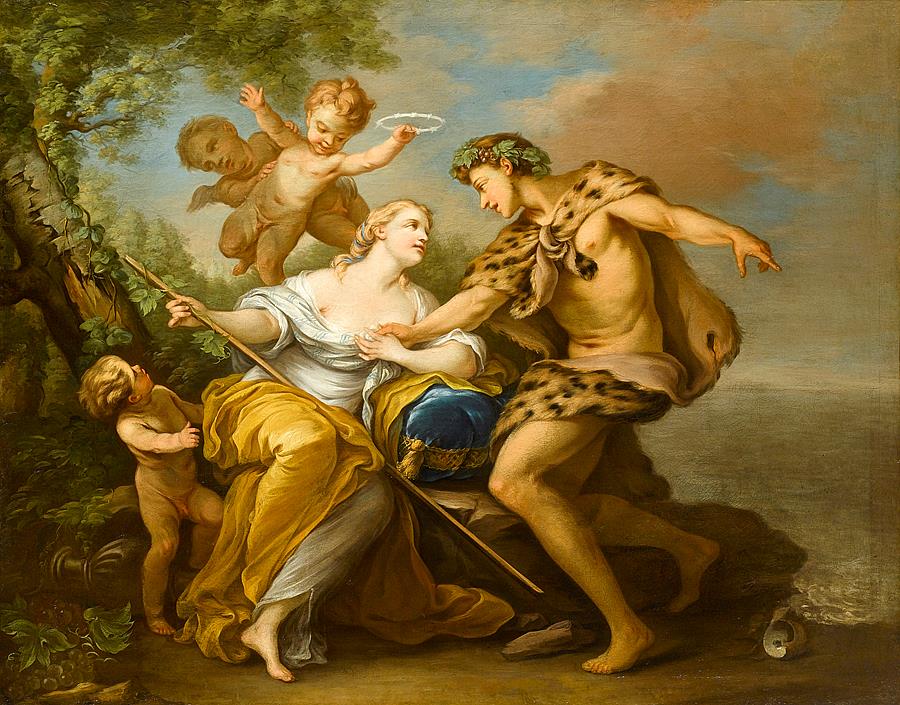
Bacchus and Ariadne Bacchus and Ariadne
Titian, Bacchus and Ariadne was one of the five masterpieces of Italian Renaissance paintings residing in the private gallery of Alfonso d'Este, the Duke of Ferrara. The Camerino d'Alabastro (Alabaster Room) in the ducal palace was - without a doubt - one of the most significant art collection projects of its time (1, 2, 3).

Giovanni Battista Tiepolo Bacchus and Ariadne (National Gallery of Art, Washington, DC,) 1696
Reni's Bacchus and Ariadne appears on p. 8, with the dimensions given as 2 ft. 9 in. wide by 3 ft. 2 in. high. In The English Connoisseur in 1766, a painting in the saloon is described as "Bacchus and Ariadne, two single figures by Guido," confirming its identification with the painting that remained with the Kedleston Estate until it was.
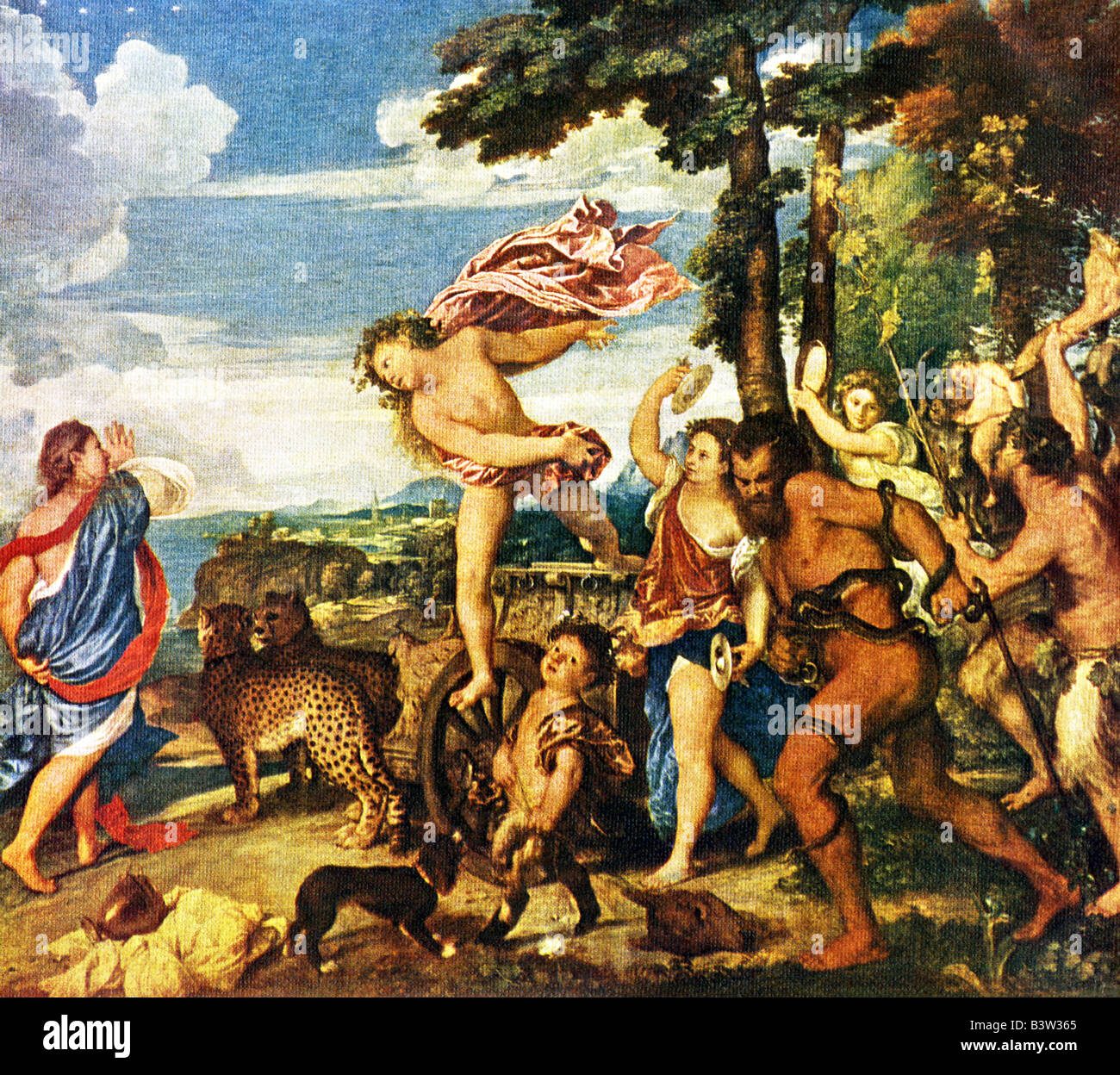
√ Titian Bacchus And Ariadne Popular Century
Titian, Bacchus and Ariadne, 1520-23, oil on canvas now atop board, 69-1/2 x 75 inches (National Gallery, London).Speakers: Dr. Beth Harris and Dr. Steven Zucker . Part of a mythological cycle painted by Titian and Giovanni Bellini and commissioned by Alfonso d'Este, Duke of Ferrara that includes The Feast of the Gods and the Andrians.

Dionysus/Bacchus and Ariadne Eugene Delacroix (18561863) Eugène delacroix, Delacroix
Bacchus and Ariadne (1522-1523) is an oil painting by Titian. It is one of a cycle of paintings on mythological subjects produced for Alfonso I d'Este, Duke of Ferrara, for the Camerino d'Alabastro - a private room in his palazzo in Ferrara decorated with paintings based on classical texts.
Bacchus and Ariadne, 152023 Canvas Print by Titian iCanvas
Bacchus and Ariadne (the painting guide). 1520-1523. The National Gallery, London. 1. ARIADNE. The daughter of the Cretan king Minos. And Minotaur was her twin brother. They didn't look alike, but were born by one venter. Unlike his sister, Minotaur was a monster. And every year he ate 7 girls and 7 boys.
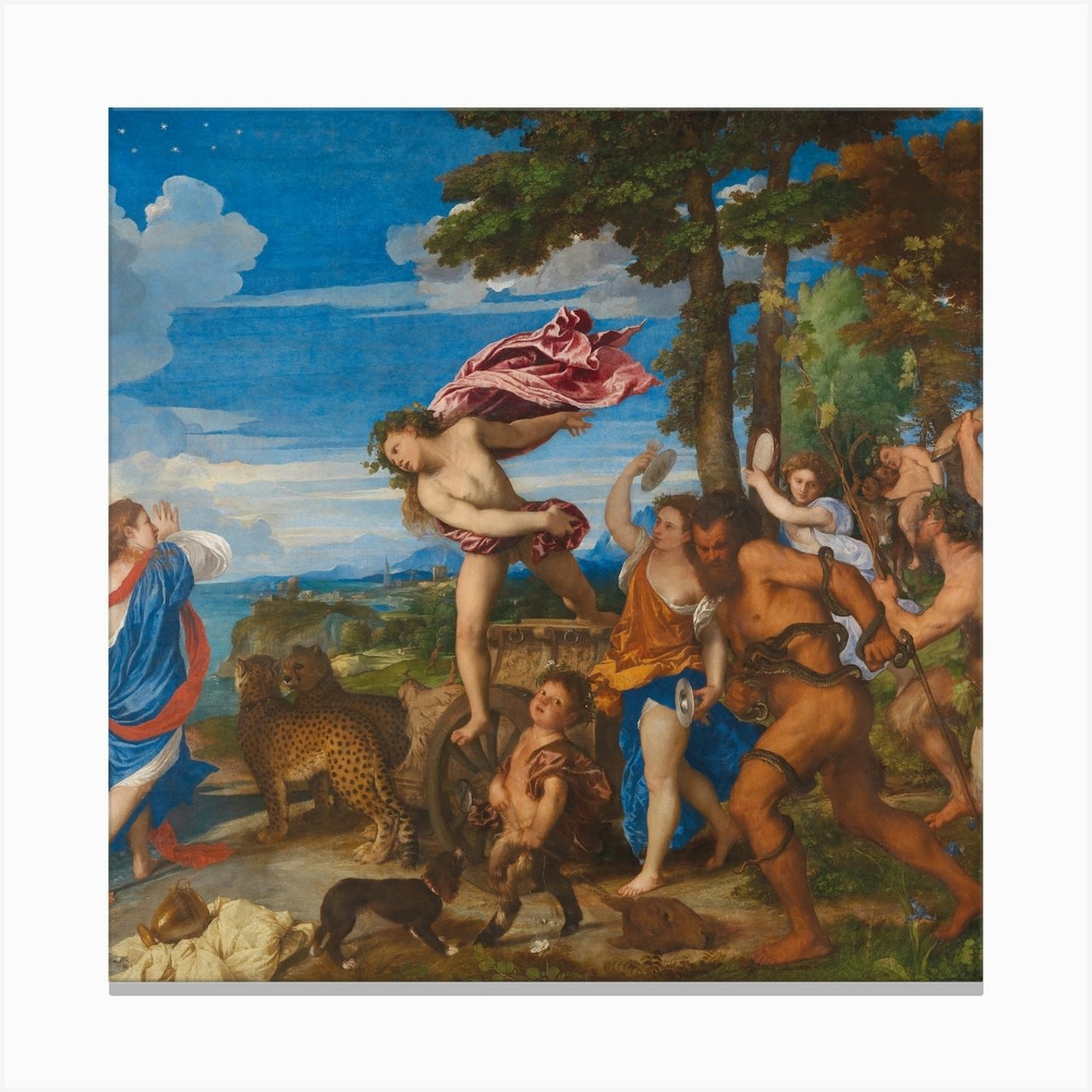
Bacchus And Ariadne, Titian Art Print by The National Gallery Fy
Bacchus and Ariadne - Ricci, Sebastiano. Museo Nacional Thyssen-Bornemisza. The present pair of canvases depicts the weddings of Neptune, god of the sea, and Bacchus, god of wine. They can be dated to the early 1690s during the time Ricci was in Rome. Among his most important works of this period is the fresco commissioned by the Colonna family.

Flemish School 17th Century DER TRIUMPH VON BACCHUS UND ARIADNE MutualArt
Bacchus and Ariadne is a painting produced between 1522 and 1523 by Italian painter Titian. This painting is considered as one of the prominent masterpieces of Italian Renaissance paintings. Bacchus and Ariadne, one of his most famous paintings, tells the story of Ariadne, daughter of King Menos of Crete, who had subsequently been left on an.
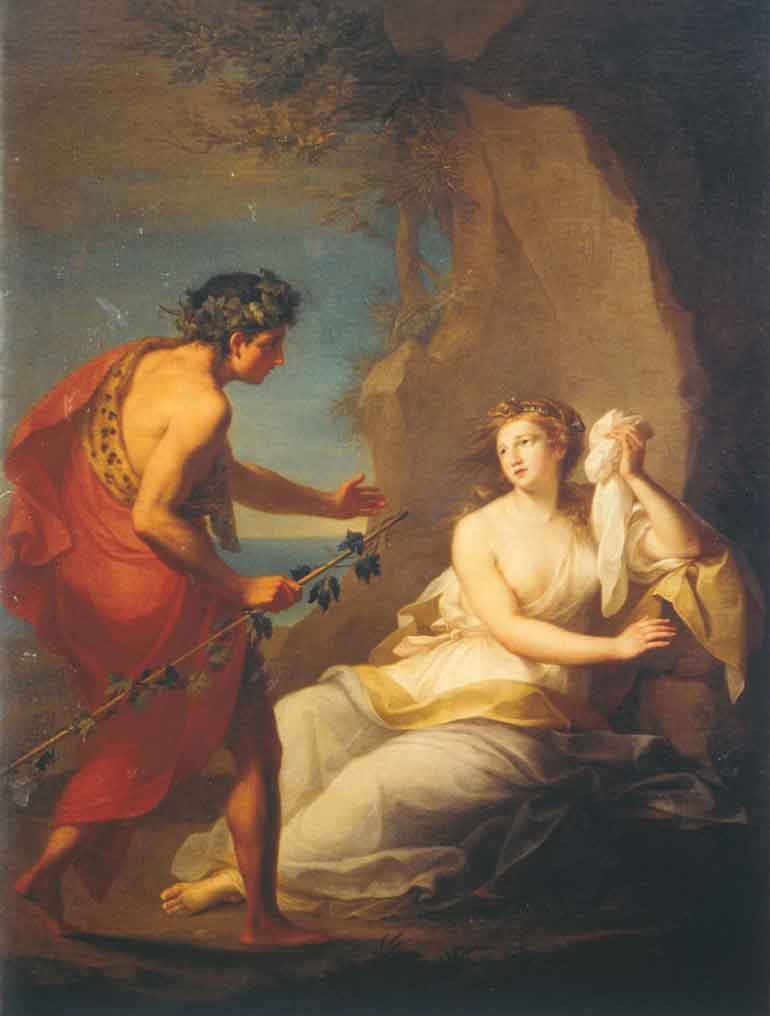
Bacchus Discovering Ariadne on Naxos. Angelica Kauffmann
Contributors; Bacchus and Ariadne is part of a mythological cycle painted by Titian and Giovanni Bellini and commissioned by Alfonso d'Este, Duke of Ferrara. The cycle also includes The Feast of the Gods and the Andrians.It was originally hung in the studiolo or Camerini d'Alabastro of the Duke's Ferranese castle.. Dr. Beth Harris and Dr. Steven Zucker provide a description, historical.
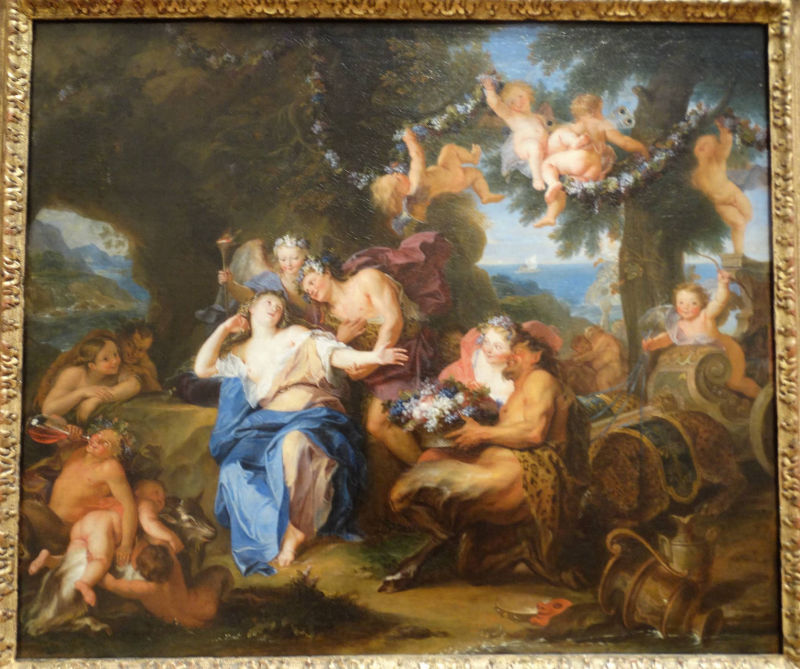
Antoine Coypel
Other articles where Bacchus and Ariadne is discussed: Titian: Mythological paintings:.of the most spectacular is Bacchus and Ariadne. The gaiety of mood, the spirit of pagan abandon, and the exquisite sense of humour in this interpretation of an idyllic world of antiquity make it one of the miracles of Renaissance art. Warmth and richness of colour help to balance the…
Museumsqualität Prints bacchus und ariadne ( detail ), 1520 von Tiziano Vecellio (Titian
Curator of 16th-century Italian Paintings, Matthias Wivel talks through Titian's Renaissance masterpiece 'Bacchus and Ariadne', a work inspired by Ovid's Cla.

Bacchus und Ariadne Digitale Sammlung
by Dr. Beth Harris and Dr. Steven Zucker. Titian, Bacchus and Ariadne, 1523-24, oil on canvas now atop board, 69-1/2 x 75″ (National Gallery, London) This is part of a mythological cycle painted by Titian and Giovanni Bellini and commissioned by Alfonso d'Este, Duke of Ferrara that includes The Feast of the Gods and The Bacchanal of the.